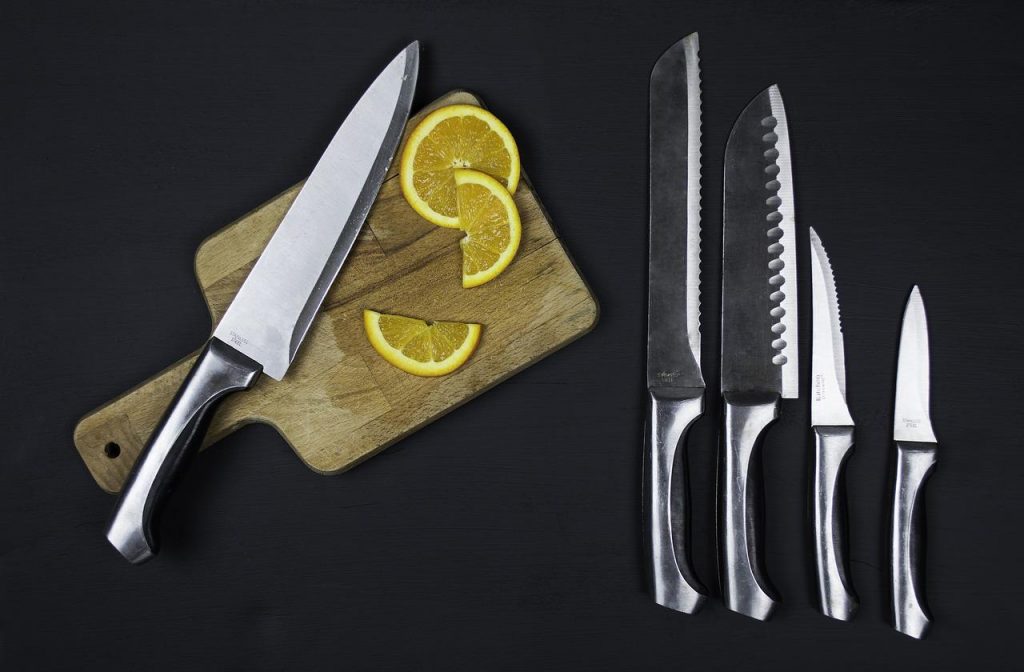One of the most common jobs for a utility knife is to cut electrical wire. You’ll be cutting it for years; it is a ubiquitous part of everyday life. If you work in a field that requires you to cut electronic wiring from time to time, it is almost certain you will have a utility knife in your possession by the end of the day. A utility knife is a specialized type of knife that is designed specifically for utility work. They are not designed for fine work and are not meant to cut expensive materials. But, because they are cheap, durable and easy to use, they are a popular option for most people. When you purchase a utility knife, you want to find one that suits your needs. The right knife can help save you money and time, while a poor knife can turn what should be a simple and easy task into something that is frustrating and time-consuming. Your utility knife should be comfortable to use, durable, easy to clean, and have the right features. Here are the top considerations when buying a utility knife.
What to look for in a utility knife
Your utility knife should have a blade that is sharp enough to cut wire. If the blade is not sharp enough, you will struggle to cut the wire and could end up damaging the knife as well. It is important to look for a utility knife with a sharp blade because the wire you are cutting can be hard and can easily damage other types of cutlery.
A utility knife blade will come in a variety of types including straight, Tanto, and serrated. When choosing a blade type, you should consider the type of work you will be doing.
Brands to consider
There are a lot of utility pocket knives to choose from, which can make it difficult to find the right one. To help you find the right utility knife, consider looking at recommended brands.
SAVANT – SAVANT is a Japanese manufacturer of high-quality knives that prides itself on creating functional, affordable tools. SAVANT’s utility knives are affordable, durable and designed to withstand rigorous use.
WACKER – Wacker is a German brand that makes a full range of knives, from saws to axes to machetes and more. Its utility knives are lightweight and sturdy, and are ideal for cutting a variety of materials.
Blade type and size
The blade type and size of your utility knife is crucial. The blade should be enough to cut the wire you are going to be working with.
If the wire is too thick, the blade will not be able to penetrate it. If the wire is too thin, it will be easy to break. In addition to wire, the blade of a utility knife can also be used for cutting wood and other similar materials.
The blade of a utility knife is either straight or serrated.
Straight blades are designed for cutting wire, wood, and other similar materials. They can also be used for general purposes such as cutting through cardboard, plastic, and paper.
Serrated blades are best used for cutting through rope, twine, and other similar materials. They are also useful for general use, such as cutting through baked goods.
Serrated blades are best for cutting through rope, twine, and other similar materials. They are also useful for general use, such as cutting through baked goods.
Handle material
The handle material of your utility knife is also an important feature to consider. Depending on what you plan to do with it, a partially or fully serrated blade can come in handy.
Some people prefer plastic handles while others believe that aluminum is the best material for handles.
While many utility knives come with a plastic handle, it is always good to check first. In some cases, it can get slippery and you may want to switch to a metal one.
Other features to look for
While the blade is one of the most important features of a utility knife, it is not the only one. You should also consider the design of the handle, ergonomics, weight, and build quality.
Design – The design of a utility knife plays an important role in how comfortable you are using the knife. It can affect how naturally you hold the knife so you don’t strain your hands or arms. Comfort is especially important when using a knife for longer periods of time.
Ergonomics – The design of a utility knife can affect comfort, but it is also an important factor in how a knife functions. If a knife is not ergonomic, it will be hard to use properly.
Weight – The weight of a utility knife affects how easy it is to use. A heavy knife can be cumbersome to use, while a too-light one can be difficult to hold steady.
Build quality – A build quality knife is designed to be durable. It is not just about the blade, but also the handle and other components such as the screws used to hold them together.
Conclusion
A utility knife is a crucial tool for almost every working person. It is used to cut a variety of materials, including wire and wood.
Depending on what you plan to do with your utility knife, you may want to get one with a straight blade or one with a serrated blade.
You should also choose a utility knife with a blade that is sharp enough to cut wire and a handle that is comfortable to use.
These features will help you find the right utility knife for your needs.
